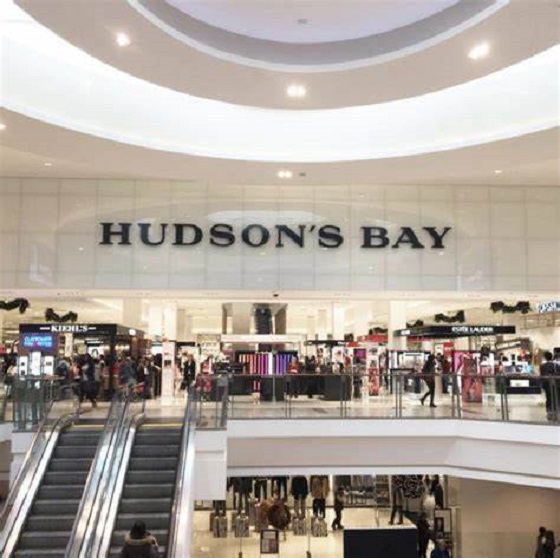Also Interesting
Exterior Design Tips: The Importance Of Sun Protection

There are many ways in which you can protect your property from the sun. The most important thing to remember is that a lot of materials, both man-made and natural, will be damaged by UV rays if they come in contact with them for too long. This means that when it comes to exterior design, protecting your home and yourself from these damaging sun rays should be one of the very first things on your list! Here are three different kinds of protection you can add to keep yourself safe from the harmful properties of the sun.
Get an awning
Fences or other structures outside could provide you with some shade, but be wary of bushes and other greenery as they may provide too much shade. While there are no laws requiring what kind of shade you should have outside, there are some standards that other exterior designers may follow.
One thing you can do is install awnings. In places like Florida, where it’s always sunny and where the sun’s rays can be very damaging to homes, awnings and other forms of sun protection are extremely popular. More and more people are getting awnings for their homes because they provide the perfect amount of sun protection. An awning gives you all the benefits of being able to enjoy your property’s exterior without limiting your home’s appearance. So if you live in Florida, make sure to look for the best awnings in Tampa, Florida for your backyard. The right one will guarantee that your home stays protected from the sun at all times.
Plant trees
Getting down to the basics and having a few trees planted on your property is another great way to provide some shade, while still keeping your yard looking natural. You can choose how many and what kinds of trees you plant in order to get the right amount of shade where it matters most. Just be sure not to block walkways or windows from the sun’s rays with too many trees, or else it defeats the purpose!
This is a common solution that you might see on older properties, especially those that have lots of trees and greenery already growing. This kind of shade can be very effective at keeping your home cool, but there are a few things you will need to consider before adding this to your exterior design:
Patio umbrellas
Patio umbrellas offer not only shade but also a sense of privacy. They can be installed on the patio or deck so that you and your family can enjoy outdoor living without having to worry about sunburns or heat exhaustion. These durable products are available in many styles and colors with a variety of fabric choices. A high-quality one will last for years if properly cared for.
These sorts of umbrellas are popular for a reason – they’re easy to roll out and retract. They can be left open in the rain with no damage, and they stay looking good for years. The best ones feature an electric motor that opens them up, so you don’t have to do it manually.
These umbrellas come with different types of bases. Some are meant to be staked directly into the ground, while others come with a weighted base. These allow you to place them on soft surfaces (like grass) without worrying about keeping them upright and stable.
If you’re not sure if an umbrella is right for the space you want to put it in, measure both the umbrellas and the area you plan to put them in. By measuring the umbrella and the area, you won’t get any unpleasant surprises when they’re installed.
Umbrella tents
These styles of umbrellas provide surprise protection from the sun. They’re lightweight and can be carried around easily. They also don’t take up too much space, so they’re easy to store in your garage when you are finished using them.
These are great for picnics, camping trips, your backyard, or any other time you want to sit outside without worrying about getting too much sun. If you have a lot of large gatherings, these are an excellent choice for being comfortable while staying safe.
Tents are easy to set up and take down. You can have them ready to go in just a few minutes, any time you want to get out into the fresh air! These also tend to be cheaper than patio umbrellas.
Stand-alone sunshades
Sometimes referred to as bumbershoots, these products provide protection from the sun’s rays by shading areas such as patios, decks, porches, etc., with a large overhead canopy. From the simplest models to more complex ones, they come in various styles and colors and can add a touch of style to your outdoor living space. They also provide the convenience of being portable, so you can take them with you when hosting outdoor gatherings. They are especially helpful for those who enjoy spending time outdoors but may be too sensitive to the heat and sun’s harmful rays.
Sun shield wall
A sun shield wall is an exterior structure built from opaque materials that not only provide shade but also shield you from UV rays. This is a permanent solution for areas such as walkways, decks, and patios, and it needs little maintenance once installed. It is a sturdy design that delivers reliable protection against the sun’s harmful rays throughout the year.
Opt-in for this kind of solution if you want to make your home more beautiful and lower the risks of sunburns and skin damage. It is easy to get overwhelmed with exterior design choices, but finding something that can provide you with proper protection while enhancing the look of your backyard or garden should be a top priority.

The sun is a beautiful and life-giving force in our lives, but it can also be dangerous if we don’t take the right precautions. One of the best ways to protect your skin from its harmful rays is by using an umbrella or stand-alone sunshade that offers protection from the Sun’s dangerous rays. Patio umbrellas are popular for their ease of use and durability, however, they may not work well for everyone depending on what type of surface you’re installing them on (e.g., grass). If you need more shade than just a patio umbrella provides, consider purchasing an awning or canopy that will give you the protection you need.
Also Interesting
How to Deposit and Withdraw in CAD at Sol Casino: A Guide for Canadian Players

When choosing an online casino, Canadian players not only look for exciting games and bonuses but also for easy and secure payment methods in Canadian dollars (CAD). Sol Casino understands this need and has created a streamlined system for deposits and withdrawals that suits players across Canada.
This guide walks you through how to fund your account, cash out your winnings, and which methods are most efficient and convenient.
Why Use CAD at Sol Casino?
Sol Casino supports transactions directly in Canadian dollars, which is a huge advantage. This means:
No currency conversion fees
Simplified banking
Faster transactions
Better tracking of your gambling budget
For Canadian players, avoiding unnecessary fees and delays is crucial. Sol Casino ensures you can deposit and withdraw in your local currency without any added complications.
How to Deposit Funds at Sol Casino (Step by Step)
Funding your Sol Casino account is simple. Follow these steps to make a deposit:
1. Log in to your Sol Casino account.
2. Go to the Cashier/Deposit section.
3. Choose your preferred payment method.
4. Enter the amount you wish to deposit (minimum deposit usually starts at $20 CAD).
5. Follow the prompts to complete the transaction.
Most deposits are instant, meaning you can start playing right away.
Popular Deposit Methods for Canadians
Sol Casino offers a variety of trusted options tailored for Canadian players:
Interac e-Transfer: A go-to choice in Canada, easy to use and highly secure.
MuchBetter: A modern e-wallet app offering fast, private transfers.
ecoPayz: Another reliable e-wallet widely used in Canada.
Visa/Mastercard: Traditional and familiar for most users.
Cryptocurrencies: Includes Bitcoin, Ethereum, and more for added privacy.
Each method is secure and designed to fit your lifestyle and preferences.
How to Withdraw Winnings in CAD
Cashing out your winnings is just as easy. Here’s how to request a withdrawal:
1. Go to your account dashboard and select Withdraw.
2. Choose the same method used for depositing (if possible).
3. Enter the amount you want to withdraw.
4. Submit your request and wait for confirmation.
Before processing your first withdrawal, Sol Casino may ask for ID verification to comply with KYC (Know Your Customer) rules. This is standard for any legitimate casino and helps protect your account from fraud.
Withdrawal Processing Time
Sol Casino processes withdrawal requests quickly. Here’s a general idea of how long it may take:
E-wallets (MuchBetter, ecoPayz): 0–24 hours
Cryptocurrency: 1–12 hours (depending on network speed)
Interac: 1–2 business days
Cards (Visa/Mastercard): Up to 3–5 business days
Once your identity is verified, future withdrawals are often processed faster.
Tips for Smooth Transactions
Verify your account early to avoid delays during your first withdrawal.
Use the same method for deposit and withdrawal whenever possible.
Set responsible limits to manage your gambling activity.
Watch for promotions offering cashback or deposit bonuses for specific payment methods.
Sol Casino also sends notifications and email confirmations for each transaction, adding transparency to the process.
Customer Support for Payment Issues
If you run into any trouble while depositing or withdrawing, Sol Casino has a 24/7 support team ready to help. You can use:
Live chat for immediate assistance
Email support for more detailed inquiries
FAQ section with answers to common questions about payments
All services are available in English and French, making support accessible to all Canadian users.
Conclusion: Fast, Flexible, and Canadian-Friendly Banking
Sol Casino has built a payment system that respects Canadian needs. With support for CAD, a variety of local methods like Interac and MuchBetter, and fast withdrawals, it provides a hassle-free banking experience. Whether you’re playing for fun or aiming for big wins, Sol Casino ensures your money is handled safely, securely, and efficiently.
Also Interesting
Actuators in Industrial Automation: How They Improve Efficiency

In the quest for enhanced productivity and reduced operational costs, many industries face challenges in optimizing their automation systems. Integrating advanced technologies, such as actuators, alleviates these issues by automating processes and minimizing manual intervention. Leveraging the capabilities of an actuator allows businesses to streamline operations and achieve higher efficiency.
Industrial automation continues to evolve, with a focus on precision and reliability. As of 2025, advancements in automation technologies are projected to increase productivity by up to 30% in various sectors, according to the International Federation of Robotics report. This growth is attributed to the strategic use of components like the actuator, pivotal in enhancing operational efficiency.
Actuators: What are They?
Actuators are mechanical devices that convert energy into motion and enable precise control over various industrial processes. They are categorized into:
Electric
Hydraulic
Linear
Each type offers unique advantages (e.g., precision, force, speed) for different applications. Understanding what actuators are and how they work is crucial for application in industrial settings.
The question “What are actuators?” is often followed by “What is the work of an actuator?” These devices perform tasks that require movement or force (e.g., opening valves, moving parts in machinery, or adjusting positions in assembly lines). They are integral to systems requiring precise control, making them a cornerstone of modern automation.
The Role of Actuators in Industrial Automation
Actuators are the backbone of industrial automation, enabling precise control and integration across systems. Their ability to convert energy into motion makes them indispensable for optimizing processes, reducing costs, and improving productivity.
In control systems, they work with sensors to enable real-time adjustments. For example, in food processing plants, electric motors adjust conveyor speeds, ensuring consistent packaging and reducing waste. It minimizes downtime and saves businesses time and money.
In robotics, devices like the actuator arm deliver high precision. In automotive assembly lines, linear drives allow robotic arms to weld or paint with millimeter accuracy, reducing rework and enhancing product quality.
Beyond robotics, these motors streamline machinery operations. In the oil and gas industry, hydraulic motors control pipeline valves, eliminating manual intervention in hazardous environments and improving safety.
How Actuators Improve Operational Efficiency
Here is how actuators enhance industrial operation:
They offer precise control over movements, essential in applications requiring high accuracy (e.g., manufacturing, robotics). It reduces errors and improves product quality. For example, in CNC machining, linear actuators ensure cuts are made with exactness, resulting in parts that meet precise specifications.
They speed up production cycles, allowing for higher output in less time. It is beneficial in assembly lines where actuator assembly and actuator adapter components are used to streamline processes. In automotive manufacturing, they can quickly position and secure parts, reducing assembly time.
They minimize the need for human intervention, reducing the risk of errors and accidents. It improves safety and increases productivity by allowing workers to focus on more complex tasks.
In environments where repetitive tasks are common, motors automate these processes, freeing up personnel for strategic roles.
Applications of Actuators in Various Industries
Actuators are used across different industries to enhance efficiency and productivity.
Manufacturing. Linear drives are used in machinery to ensure precise movements and consistent product quality. They are integral in assembly lines, where they automate tasks such as positioning and lifting components. For instance, in electronics manufacturing, actuators precisely place components on circuit boards, ensuring each product meets quality standards.
Oil and gas. Here, hydraulic motors are used for valve control due to their high force capabilities, necessary for handling heavy loads.
Food processing. In this niche, electric motors are preferred for their cleanliness and low maintenance, ensuring production lines remain hygienic and efficient. They are used in machinery requiring precise control (e.g., filling and packaging systems).
How to Choose the Right Industrial Actuator
Evaluate several factors for optimal compatibility with your applications:
Determine whether your application demands linear, rotary, or oscillatory motion. For example, linear motors are ideal for tasks requiring straight-line movement, such as positioning components in manufacturing lines.
Assess the load capacity and force requirements of your application. Heavy-duty applications, like those in the oil and gas sector, often require hydraulic actuators due to their high force capabilities.
Evaluate the operating environment, considering factors such as temperature, humidity, dust, and corrosive conditions. Ensure the actuator’s materials and design are suitable for these conditions by checking IP ratings, temperature limits, and corrosion resistance.
Ensure the motor is compatible with existing control systems. It includes considering manual, mechanical, electrical, or computer-based control options to ensure integration.
Consider safety factors (e.g., emergency stop mechanisms and fail-safe designs), especially in critical applications like vehicle automation.
Actuators are essential in industrial automation, delivering precision, speed, and efficiency to optimize operations across sectors. Integrating the right motors will allow businesses to reduce costs, enhance productivity, and maintain a competitive edge in an automated landscape.
-

 2025 Federal Election2 days ago
2025 Federal Election2 days agoBREAKING: THE FEDERAL BRIEF THAT SHOULD SINK CARNEY
-

 Media2 days ago
Media2 days agoCBC retracts false claims about residential schools after accusing Rebel News of ‘misinformation’
-

 2025 Federal Election2 days ago
2025 Federal Election2 days agoCHINESE ELECTION THREAT WARNING: Conservative Candidate Joe Tay Paused Public Campaign
-

 Business2 days ago
Business2 days ago‘Great Reset’ champion Klaus Schwab resigns from WEF
-

 Bjorn Lomborg2 days ago
Bjorn Lomborg2 days agoNet zero’s cost-benefit ratio is CRAZY high
-

 International2 days ago
International2 days agoPope Francis’ funeral to take place Saturday
-

 Business23 hours ago
Business23 hours agoTrump: China’s tariffs to “come down substantially” after negotiations with Xi
-

 Business2 days ago
Business2 days agoHudson’s Bay Bid Raises Red Flags Over Foreign Influence




